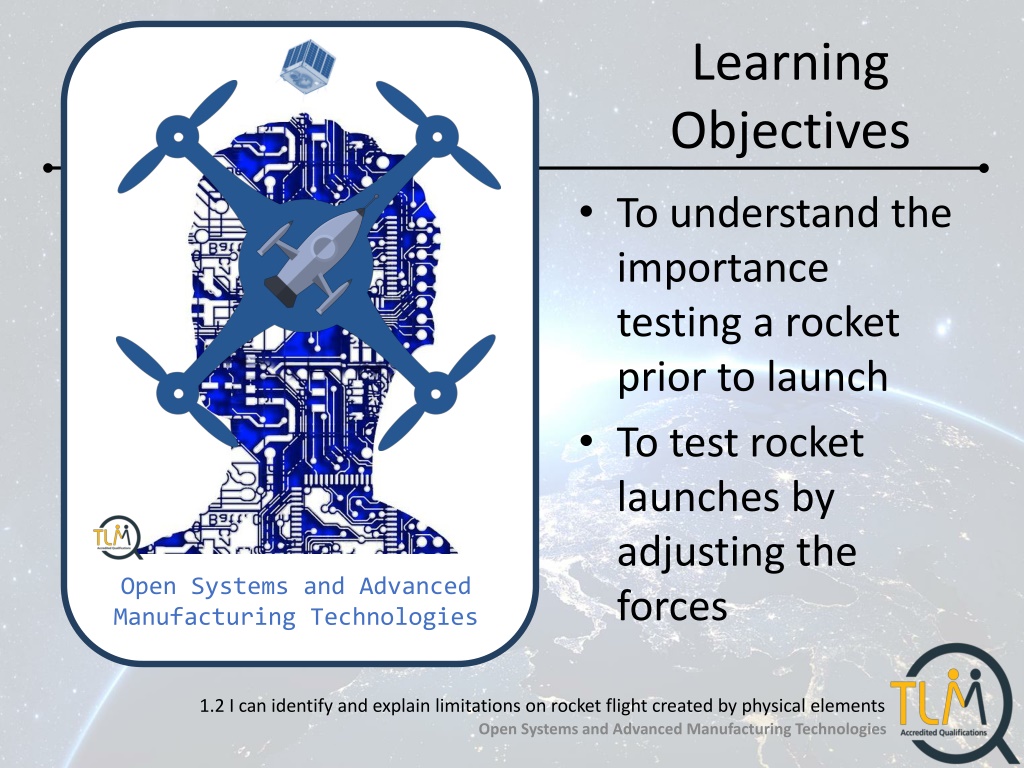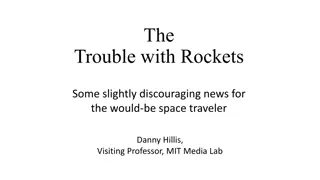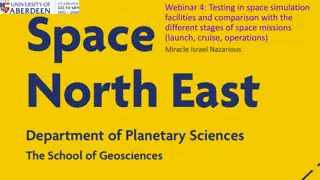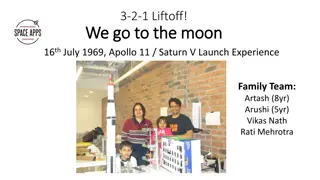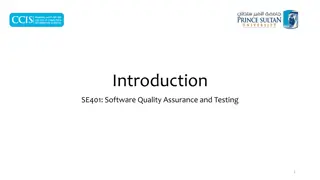Importance of Testing Rockets Before Launch
Understanding the significance of testing rockets before launch, exploring limitations created by physical elements, and emphasizing the importance of thorough testing to identify problems, fix errors, and improve rocket performance. The content includes discussions on physical elements affecting rocket flights, the necessity of simulations to test rockets, and key factors such as mass, thrust, time of thrust, and drag in rocket launches.
Download Presentation

Please find below an Image/Link to download the presentation.
The content on the website is provided AS IS for your information and personal use only. It may not be sold, licensed, or shared on other websites without obtaining consent from the author. Download presentation by click this link. If you encounter any issues during the download, it is possible that the publisher has removed the file from their server.
E N D
Presentation Transcript
Learning Objectives To understand the importance testing a rocket prior to launch To test rocket launches by adjusting the forces Open Systems and Advanced Manufacturing Technologies 1.2 I can identify and explain limitations on rocket flight created by physical elements Open Systems and Advanced Manufacturing Technologies
Starter What is a physical element? Weight Thrust Homework was to look at failed launches did anyone find any that physical issues were the reason for the failure? 1.2 I can identify and explain limitations on rocket flight created by physical elements Open Systems and Advanced Manufacturing Technologies
Launching a rocket It is an important element to thoroughly test a rocket before the actual launch WHY is this important? 1.2 I can identify and explain limitations on rocket flight created by physical elements Open Systems and Advanced Manufacturing Technologies
Why is testing important? To find problems To fix errors To improve the rocket To test weather conditions To test materials Any more? 1.2 I can identify and explain limitations on rocket flight created by physical elements Open Systems and Advanced Manufacturing Technologies
Welcome! Your challenge is to make each rocket go as high as possible. https://www.sciencelearn. org.nz/embeds/25-rocket- launch-simulation You need to access the above web link and complete your own simulations WHO can get the rocket the highest? Complete the test plan on your worksheets to document the simulations 1.2 I can identify and explain limitations on rocket flight created by physical elements Open Systems and Advanced Manufacturing Technologies
Simulations Mass Mass is measured in kilograms. A rocket with more mass will not accelerate as quickly but will also not be as affected by drag. Thrust Thrust is the upwards force. The amount of thrust affects how much the rocket will speed up. Time of thrust If thrust acts for a longer time, the rocket will speed up more. Drag Drag is the opposing force of air resistance. There is more drag at faster speeds. Mass change As the rocket fuel reacts and is propelled from the rocket, the rocket becomes lighter 1.2 I can identify and explain limitations on rocket flight created by physical elements Open Systems and Advanced Manufacturing Technologies
Right click on chart and select edit data to add your launch heights and see who went the highest Height 25 20 15 10 5 0 Name 2 Name 3 Name 4 Name 5 Name 6 Name 7 Name 8 Name 9 Name 12 Example Launch Name 10 Name 11 Name 13 1.2 I can identify and explain limitations on rocket flight created by physical elements Open Systems and Advanced Manufacturing Technologies
Plenary Who went the highest? What were the adjustments you made? Mass Thrust Time of Thrust Drag Mass Change 1.2 I can identify and explain limitations on rocket flight created by physical elements Open Systems and Advanced Manufacturing Technologies
